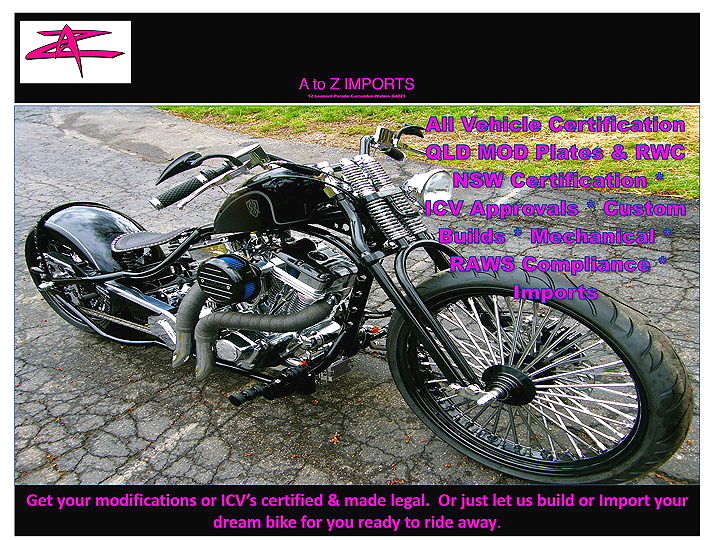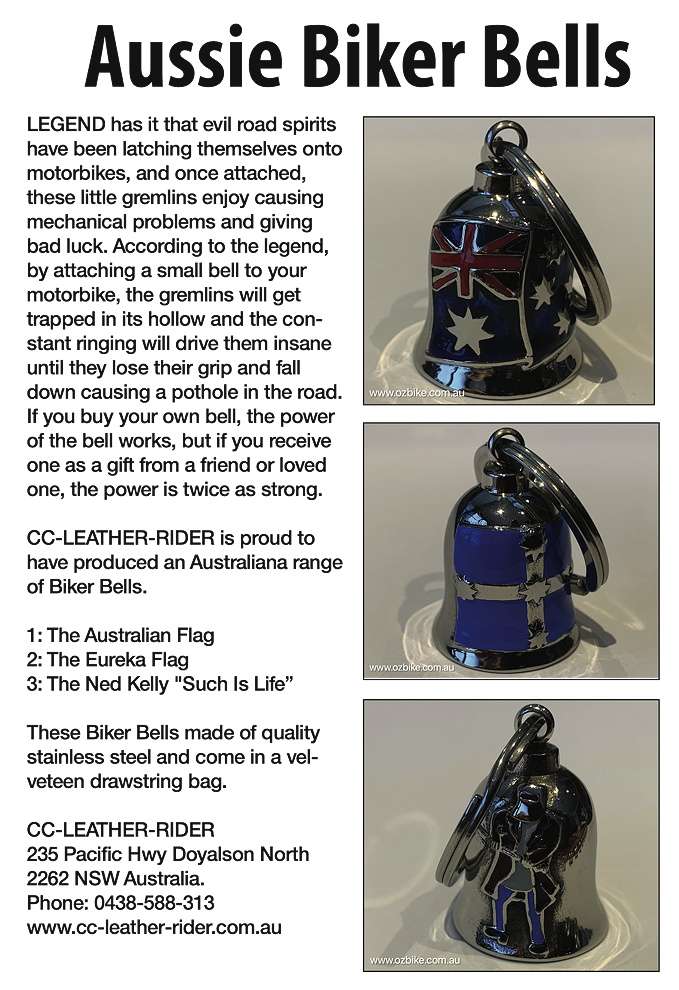An Alien Chopper Has Landed
Rick was setting himself a challenge. His vision was to build an aggressive alien beast involving lots of technical engineering advances.
THE CONCEPT for the Alien Chopper developed when I was drawing a mental picture of a mean and nasty looking machine with an aggressive presence. The vision that was taking place was for something with a very minimalist look. But I didn’t want something that just looked really cool—I wanted it to work well and something that would last.
I wanted the engine to be a feature of the beast—the heart, if you like, to stand alone—to look like it was slung from the under belly of the beast, free of all the things you normally see hanging off the engine. It followed that the gearbox should be separate but still be part of the guts of it all.
l didn’t want the pipes to be a feature of the engine as they generally are on most bikes. Wrapping them around the forward controls and splitting each pipe into two so the final effect of having four pipes aiming at you gives a menacing appearance, as well as providing a serious WOW factor.
The carby idea was one I’ve had for a couple of years but never got the chance to use. It’s actually a Mikuni that is normally found in the marine environment. Apart from being a very efficient mechanical device, it worked well with the theme I was trying to achieve; it’s like the umbilical cord from the belly of the beast. It did take some tuning though to get it right.
Off course you can’t buy a frame like this so Jim and I made it ourselves. As part of the minimal theme I decided that l didn’t want any conventional lower frame rails as such, so basically we started building the frame around the engine & gearbox.
The lower part of the frame was constructed from 10 mm steel plate. l formed a template from a few blocks of hardwood, set it up in the press, got the oxy torch out and went for it. Imagine this—middle of summer, white hot metal and smoke pouring off the burning timber, just like an old blacksmith’s shop, but it worked out pretty well in the end forming a almost perfect curve around the crankcase.
I’d already machined the engine mounts out of 25 x 25 steel bar that was relief cut to exactly match the cases forming a raised section that we could clean the paint from and not have to cut into the paint itself. I did the same thing with the axle plates. Next we extended the plate off the back of the engine pan to form the support for the Softail-type gearbox, then it rises up behind the box to form the pivot point for the swingarm.
For the swingarm pivot l basically replicated the H-D Dyna set-up, honed to size after all the welding was done to achieve perfect roundness so the bearings run sweet as.
The swingarm itself was particularly challenging to get the line l was after and maintaining clearance for the belt. What we ended up with was a bit of a compromise between what looks good and what works. The belt actually runs through the swingarm so we built in a removable section to enable belt installation.
I had to work out the mounting points and clearances to achieve the 70 mm of swingarm travel required and still keep it all hidden as much as possible. From the swingarm pivot we split the frame tube to run around the shock and meet up with the curved backbone of the frame which we needed to run quite high over the engine for clearance to the carby and air filter, finally meeting back up with the frame neck which l machined up to incorporate Dyna steering.
I should mention here that we chromed the lower section of the frame in a satin finish, a look I was after to help hide it, to blend it in with the polish and chrome of the engine and gearbox. l even got asked by a couple of the judges at Bike Week if indeed there was a lower frame section.
For the monoshock suspension a White Power/Ohlins unit originally meant for a R1 Yamaha racebike was sourced from a old mate, Pommy Dave, who’s had a lot to do with suspension set-ups on GP bikes over the years. Obviously we had a bit of work to do with spring rates, etc, but we’ve pretty much got it sorted. It depends on the rider weight but the amount of adjustment in the shock itself is enormous. I originally worked on a linkage type system for the shock as does the R1 but space didn’t permit this and we had to revert to a direct push system similar to a Buell which we all know works quite well.
Under the gearbox l chose to mount the FLT oil pan basically where the Softail shocks would normally go. lnside the oil tank we incorporated a diffusion baffle to stop oil slop and also separate the oil feed and return.
With the frame of the beast complete l looked at the tin ware. Close-mounted fenders on rigid frames look good but we had a swingarm type frame. I’ve seen plenty of attempts at mounting the guard to the swingarm like a rigid and keeping the seat separate, none of which worked for me, so l came up with the idea of basically two separate guards—l must say the Opera House did come to mind—with the lower guard doing what guards do; the upper one supporting the seat which we also made to look like a saddle thrown over the beast.
We had already decided to make our own forward controls that would appear to rise up from under the bike. Doing this also provided a opportunity to relocate the shift linkage to run under the primary instead of over it, clearing this area for the rear exhaust to run where the shift linkage would normally be.
For the tank I had the idea of carrying through with the layer concept of the rear fender. l thought of doing it myself but realistically there was no other choice than to call on Scotty of Scotty Choppers fame. l envisioned a two-piece tank that would wrap around the carby and be topped by the breast plate of the beast, hiding the aircraft type filler cap underneath and leaving a perfectly clear space for some of the most amazing art work you will see on a motorcycle.
The paint work, for me anyway, was the easiest part of the whole job. I gave it to two of the best guys in the business, Craig and Perry, and let them do their thing. These are the same guys who painted my last bike ‘Flame’ also featured in Ozbike Issue # 295. We had already worked out the basic theme of the Alien but l decided to leave it up to them to pick the colours and the layout. What l was trying to do was let a couple of the best guys in the game work without restriction; they’re way better at their job than l am so why get in their way.
Craig of Custom Spraypainting Concepts on the Sunshine Coast did the prep work and molding to perfection laying down the base coats that he mixed up himself, a choice of candies that often look black but get them in the right light and the effect is amazing, changing into brilliant blues and shades as the eye moves over them.
Perry of Mallet Custom Art is responsible for the amazing artwork. With this l also left it to him in complete confidence to do as he pleased; you don’t need to tell the best airbrush guy in the country how to do his job. Take a good look at the colours, but it is really the imagination, detail, depth, and fineness of line that amazes me. This guy has the talent to become one of the country’s great artists. recently releasing his first limited edition print.
When Perry was finished it was back to Craig for the final clears which are completely flawless. Perfection in paint? Yes, the judges at Bike Week later told me they gave it a perfect score of 30/30 points yet we didn’t win the Best Paint award (that’s the politics of shows l guess).
Rounding out the package we used PM casino wheels and brakes; only the best for the best. The front-end is a beautifully made Goldammer unit from Canada that l had to pull apart and re-machine to accept the Custom Cycle controls. The headlight is from Germany that works pretty well with the fork.
There’s much more to the bike that l could go on about but that’s enough from me. Hope you enjoy the Alien Chopper.
photos by Wall 2 Wall; words by Rick









